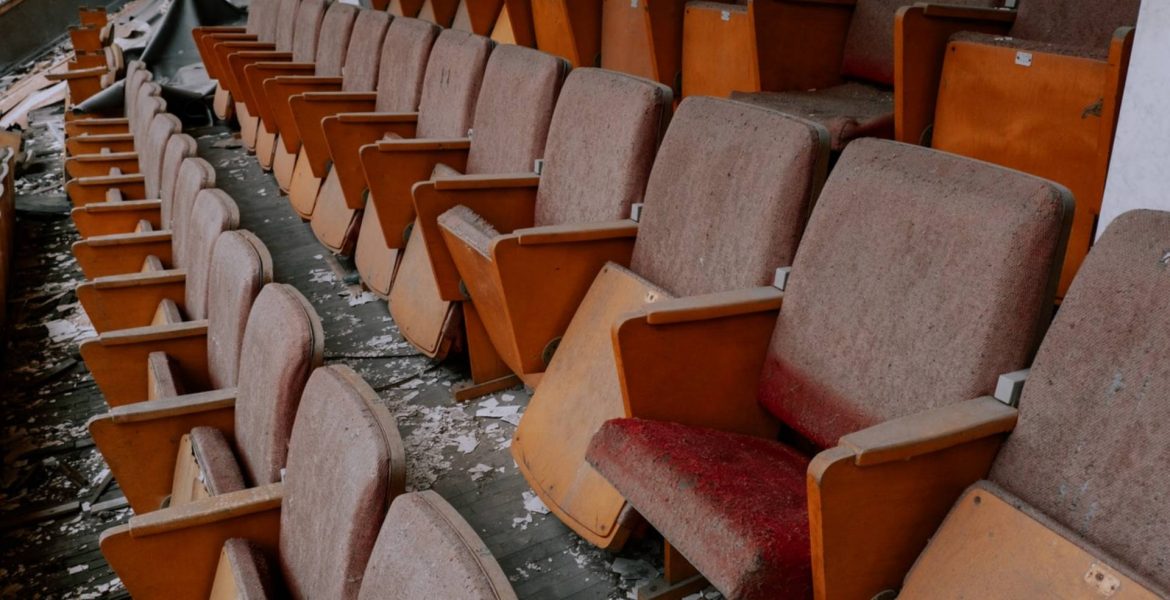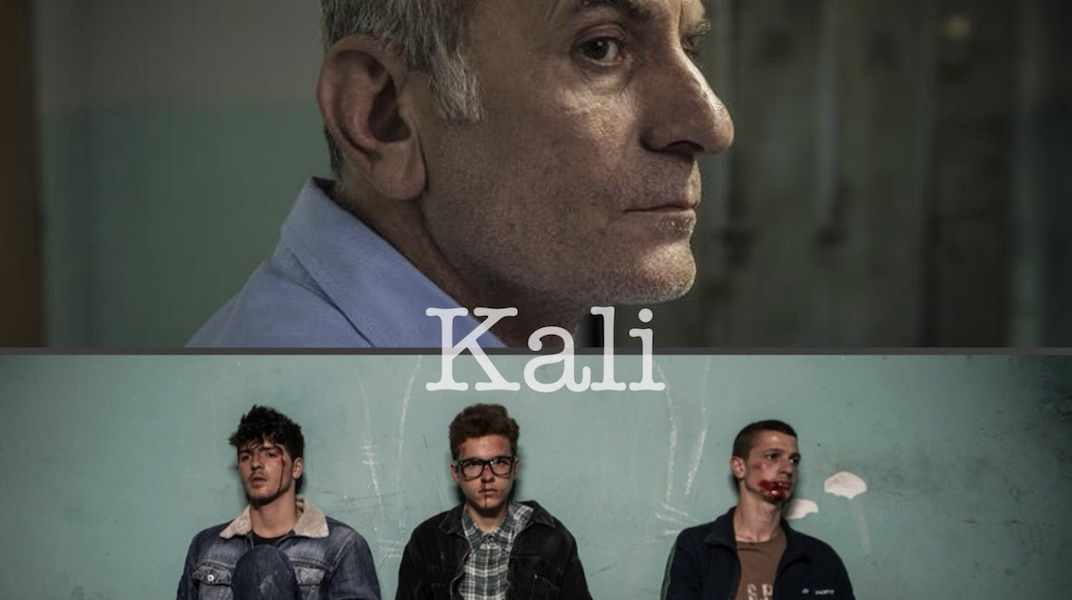There is hardly a single person from ex-Yugoslavia into whose life the notion of a cultural center has not been etched. To some, that notion bears romantic memories of their youth, the dances they went to and performances they saw there, the first encounters with musical instruments that would permanently mark their lives as well as the first kisses with their sweethearts. To others, however, it is a reference to something outdated and superfluous, an image of an expired and alien venue, of soppy memories of their parents and their romanticized youth. Regardless, all of them have an awareness of the existence of a place where cultural events took place, a personal, authentic and important facility that left a lasting mark on the society and people from that era.
In my own view, the notion of a cultural center is a multifaceted one. It denotes a dark hall with burgundy or dark green curtains and a wood-lined interior in which an obscure youth band from the neighborhood played popular songs performed by singers such as Ivica Šerfezi. It is where French chansons and Italian canzones were covered, where the early American rock music was played and adapted to suit the Yugoslav ear. All these sound stimuli were circling around the smoke-filled hall, thus leaving a permanent identity mark on a society in the making. This was the cultural center as portrayed in the movie Do You Remember Dolly Bell?, that Yugoslav cultural product half the world has seen as presented in the movie.
Another face of cultural centers is reflected in the image in which, using communal musical instruments, rock or punk bands emerge, creating their own authentic musical styles and changing the Yugoslav musical identity. Such a cultural center dates back to the eighties and is portrayed in the stories of my parents’ generation. Legends were told about bands being formed in local cultural centers, shaping the musical taste of us all. It seems like a logical sequence of events that after consuming culture, these centers became generators and creators of culture. Cultural centers were places where prominent figures of the contemporary cultural milieu were being forged.
Yet another image that comes to mind when talking about cultural centers is their non-existence in my life today or, in other words, the existence of an abandoned facility in urban areas or in small town centers. A usually sterile socialist architecture, a concrete square in a given space, void of any aesthetics and now even void of purpose.
It was from that mosaic of impressions of cultural centers as a social phenomenon that my research interest arose. Why do they exist, what was their purpose and why are they in their current state?
My research has led me to the first French Minister of Cultural Affairs, Andre Malraux. He was a picturesque personality of France’s modern history. Malraux was an art dealer, a politician, a rhetorician, a narrator, a fiction writer and an art lover – a Renaissance man born at the beginning of the twentieth Century. What connects him to our story here is the fact that he is deemed to have been the creator of cultural centers during his term in De Gaulle’s government after the War. Namely, he was responsible for launching the “Maisons de la Culture” program. That was a project of a decentralized construction of facilities that would contain a library, an exhibition space and a stage, as well as a number of classrooms. The idea was that culture and cultural contents should easily be accessible for every French citizen. Malraux was said to have declared culture as his religion and that with the small budget he had at his disposal, he succeeded in reviving the French cultural life and making the French nation proud of their country and their culture.
The post-war cultural policy in former Yugoslavia was also based on Malraux’s project. This decentralization of culture, bringing it closer to the masses, increasing accessibility and raising the awareness that culture had an emancipatory and enlightening capacity were the core motives in developing the cultural policy in former Yugoslavia and starting the construction of cultural centers. And so it came to be that already during the State Anti-Fascist governments it had been agreed to build cultural centers so as to fulfil the cultural expectations. The Executive Board of the State Anti-Fascist Council for the National Liberation of Croatia wrote:
… the easiest way to start the cultural and program engagement of the masses is to establish cultural centers. A center is designated to be a cultural facility which is to become a meeting place for the people, a junction from which, through a thoroughly designed program, the cultural and educational work will spread to the entire town, municipality, county…
In that upheaval triggered by the Socialist authorities’ program orientation in the field of cultural policies after the Second World War, a large network of cultural centers was established across Yugoslavia. There were all sorts of things out there, from those banal buildings at the very heart of quarters and communities to venues that represented serious architectural endeavors such as the Cultural Center in Konjic, Nikšić and Hrasnica. Sarajevo alone had more than 30 facilities, i.e. cultural centers that were publicly funded and had a directed, planned and organized content.
Those were the venues in which a new Yugoslav society was emerging, places where students and the „working people“ were gathering – both representing the ideological foundations of a new Yugoslavia. Music, theater performances, recitals, playing instruments and many other activities had the ambition to leave a lasting, creative mark on the new Yugoslavia. The country needed to be educated and enlightened and its rural population turned into an emancipated European and socialist nation. It was an enormous task for such small cultural centers. They were all gathering places as well as the places of ideological shaping; places where young men and women fell in love with each other, where they were taught the holy practices of socialism and given pedagogical guidelines. Cultural centers in Yugoslavia were the very heart of the community, of cultural uplifting and the extracurricular educational system. Not only did they bring culture to ordinary men, but they were also creating the culture of a small nation in the south of Europe.
The life of these facilities was interesting even during the socialist era. From what used to be their initial purpose back in the sixties, as portrayed in the Do You Remember Dolly Bell? movie, when they served as centers of social events aimed for youth and community, to their peripheralization in the mid-eighties, when Yugoslavia started opening up to new cultural forms and when new, commercialized contents started emerging. Cafes, clubs and similar forms of popular entertainment that were not products of the state’s planning but rather of the market and a practice imported from the West, had changed the manner of socialization and consummation of cultural contents of the time. New forms of entertainment and cultural events drew the youth away from cultural centers, creating an ironic drift from such an organized cultural life. Cultural centers were not prepared for the unavoidable transformation and hence remained trapped in their old forms. Such forms of organization were no longer attractive, especially when compared to cafes and discotheques.
In themselves, cultural centers reflect the dialectics of Yugoslavia and its fate. What once used to be a place where the Yugoslav society and youth were created, a place of enlightenment and emancipation, of ideological and cultural indoctrination and of the reproduction of a system of values had now become a symbol of the system’s inflexibility and a generator of subversion; it started generating ideas of defying the core system of values, which, in a certain context, should have been perceived as rewarding and which, ideally, is a path that political systems and cultural policies should follow. The purpose of public investment in culture and artistic freedom should be reflected and sought in the potential to criticize the society and set the guidelines for positive transformations and progress. However, we all know that there is no such thing as an ideal system and the Yugoslav socialism was nowhere near it.
As a dialectic starting point of their fate, upon the downfall of Yugoslavia, cultural centers were thrown into oblivion. A significant number of them was destroyed during the war or at a later point due to the authorities’ negligence. In one of his papers, Ugo Vlaisavljević stated that war was the most important cultural event in our part of the world. The thought behind this is that here, wars bring about cultural changes and epistemological cuts. Every cultural transformation that took place here was marked by war and so has the most recent cultural transformation from the socialist system of values to the multiple ethnonationalist systems of values that fed on war much in the same way as the socialist system did with the national liberation movement. The destruction caused by the war inevitably destroyed the cultural centers as one of the finest cultural products of the past era since such a system of emancipation no longer complied with the new values. Cultural centers, as secular places of social gatherings in a community, were replaced by religious institutions serving the ethnonationalist ideologies. Hence, cultural centers as homes of different values had to be removed in order to make way for new homes of values.
Transition, criminal privatization, ideological non-compliance and irresponsible management of public resources have led to a situation in which cultural centers became derelict, emptied spaces void of any content or mere closed down ramparts controlled by local authorities.
Today, when non-commercial and secularized facilities that have no market or indoctrination value but rather an emancipatory one are needed more than ever, the question that arises is whether there is a form into which a cultural center could be organized? Such facilities could play an immensely important role for us in providing resistance, in creating new artistic values, achieving freedom and providing physical access to culture for everyone. And most importantly, we need a place in which we will be enabled to create culture freely, a place that will leave a lasting mark on our lives and guide us through, a place that will provide opportunities for us.
Presently, it is possible to locate and identify certain forms of cultural centers which survived and which are more or less functional. The situation these facilities found themselves in led to a certain pressure to find alternative models in which they could function. At the moment, we can discern three operative models – centers which operate by means of public funding and management, centers managed by NGOs and those managed by informal groups of citizens.
Every one of these models has their own advantages and disadvantages and it is therefore that I find that they should be closely examined through an analysis of concrete examples of how cultural centers operate and function. Hence, this is just the beginning of the story of cultural centers. In the texts to follow, I will be closely examining the above-mentioned models through concrete examples from the region with a final view to determine and establish a potential best practice for the functioning of cultural facilities such as the cultural centers „of our time“.

Faris Šehović was born and raised in Sarajevo, Bosnia and Herzegovina and he is 24 years old. His educational background is from Political Science, more precisely International relations and Diplomacy. He is currently attending the interdisciplinary MA program at Sarajevo University on European studies, writing and preparing his MA thesis. From the professional point of view, he works for the Boris Divković Foundation as researcher and policy developer for the Foundation. As regards his academic work, his core interests are in the field of social sciences and topics such as geopolitics, identity politics and research of ideologies and correlation between ideology and social reality.


